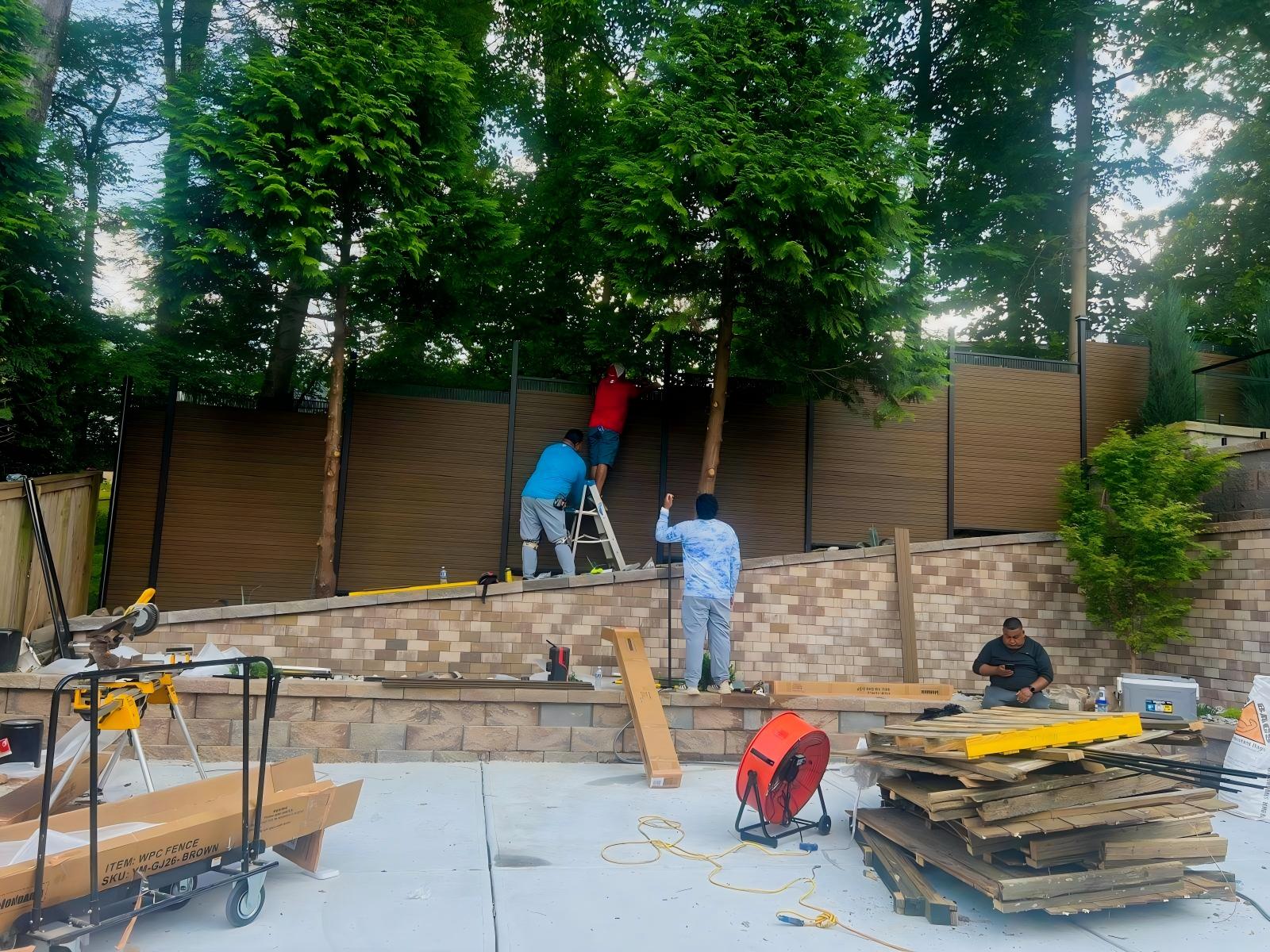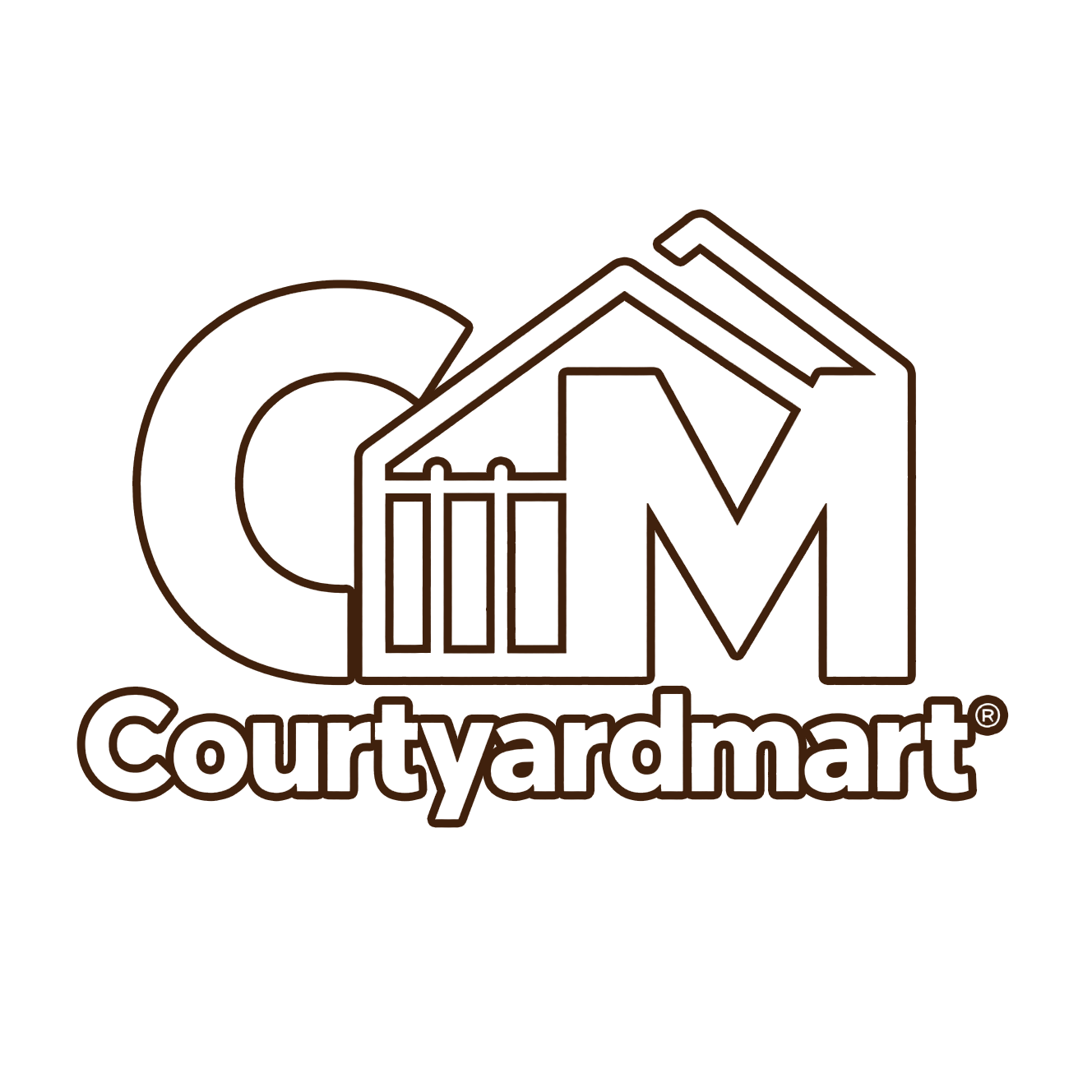
Building a Horizontal Fence on Sloped Land
Before diving into construction, it's important to understand the unique challenges that sloped land presents. Unlike flat terrain, slopes require additional considerations for stability and alignment. The key challenges include:
The natural incline of the land can make it difficult to maintain a consistent fence height and alignment. A sloped terrain means that traditional fencing methods may not apply, and adjustments need to be made to achieve a uniform look. It's crucial to analyze the slope degree and decide whether to follow the natural contour of the land or create a leveled appearance by stepping the fence. Each option has its benefits and potential drawbacks that should be weighed carefully.
Sloped land can affect water flow, potentially leading to erosion or water pooling if not managed properly. Proper drainage solutions must be implemented to prevent water from damaging the fence or the surrounding landscape. Installing drainage pipes or creating a slope-friendly landscaping design can help channel water away from the fence and reduce the risk of soil erosion. Consider consulting with a landscape architect to develop a drainage plan tailored to your land's specific needs.
Ensuring that your fence remains stable over time requires careful attention to its foundation and support. On sloped land, the gravitational pull can exert additional pressure on the fence, demanding a stronger foundation and more robust materials. Reinforcing the fence posts with concrete and choosing materials known for their durability will be crucial. Additionally, consider wind exposure on the slope, as it can further challenge the fence's stability.
By acknowledging these challenges upfront, you can plan effectively and mitigate potential issues.
Proper planning is essential for a successful fence installation. Here are the key steps to consider:
First, assess the degree of the slope. This can be done using a string line and a level. Understanding the gradient of your slope will inform your design and construction approach. Begin by identifying the highest and lowest points of your planned fence line. Measure the vertical difference between these points to determine the slope's gradient. This measurement will guide decisions on whether to step or rack the fence and how to adjust post heights accordingly.
Designing a fence on sloped land involves various factors that influence its functionality and appearance.
- Step vs. Rack Method: Decide whether to use a stepped or racked design. The stepped method involves building the fence in sections that step down the slope, while the racked method angles the fence panels to follow the slope. Consider the visual impact of each method and how they align with your landscape's aesthetics.
- Materials: Choose durable materials that can withstand weather conditions and provide longevity. Common choices include treated wood, cedar, or composite materials. Evaluate each material's resistance to moisture, rot, and pest damage, especially since the fence will be exposed to diverse elements due to the slope.
- Height and Spacing: Determine the desired height of your fence and the spacing between slats. Consider local regulations and privacy needs. The height may need to be adjusted along the slope to maintain privacy and comply with zoning laws.
Check with your local municipality regarding any necessary permits or regulations. Compliance with local codes is crucial to avoid fines or required modifications post-construction. Research local building codes that pertain to fence height, materials, and placement. In some areas, neighbors' consent may be required for boundary fences, so communication is key. Secure all necessary approvals before purchasing materials to ensure your project proceeds smoothly.
Once the planning is complete, it's time to start building your horizontal fence on the slope.
Gathering the right materials and tools is crucial for the success of your project. You will need:
- Fence Posts: Select sturdy posts that can support the weight of the horizontal slats and withstand environmental stressors.
- Horizontal Slats: Choose slats that match your design preference and offer durability against weather conditions.
- Concrete Mix: Essential for securing the fence posts in the ground, providing a stable foundation.
- String Line: Used to ensure the fence line is straight and aligned properly along the slope.
- Level: A critical tool to maintain horizontal alignment of the slats and vertical alignment of the posts.
- Post Hole Digger: Necessary for creating holes for the fence posts, ensuring they are deeply embedded for stability.
- Saw, Drill, and Screws: Tools for cutting slats to size and securing them to the posts.
- Mark Post Locations: Use a string line to mark the fence line and determine post locations. Posts should be evenly spaced and aligned along the slope. Spacing should be consistent to maintain structural integrity and an even appearance.
- Dig Post Holes: Using a post hole digger, create holes for each post. The depth should be one-third of the post length plus an additional six inches for gravel. Properly positioned holes ensure the posts stand firm against environmental pressures.
- Set Posts in Concrete: Place posts in the holes, ensuring they are level and aligned. Fill the holes with concrete and allow it to set, stabilizing the posts. It's advisable to check the alignment frequently as the concrete sets to make adjustments if necessary.
- Measure and Cut Slats: Measure the distance between posts and cut slats to fit. Ensure consistency in length for a uniform appearance. Accurate measurements are key to achieving a professional finish.
- Secure Slats to Posts: Attach the slats to the posts using screws, starting from the bottom and working your way up. Use a level to ensure each slat is horizontally aligned. This step requires patience and precision to maintain the aesthetic appeal of the fence.
- Adjust for Slope: If using the racked method, angle each slat to follow the slope. For the stepped method, adjust the slats in sections to maintain a level top. Consider using a template or guide to maintain consistent angles or steps.
- Seal and Protect: Apply a weather-resistant sealant to protect the wood from moisture and UV damage. This step prolongs the life of your fence and keeps it looking new.
- Check Stability: Ensure that all components are securely fastened and check the overall stability of the fence. This final inspection helps identify any weak points that may need reinforcing before the fence is put to use.
Consider these design ideas to enhance the appeal and functionality of your horizontal fence:
Incorporate materials like metal or stone with wood for a modern look. The combination of different materials can create a striking contrast and add visual interest to your fence. For instance, using metal frames with wooden slats provides a contemporary and industrial aesthetic that blends well with both urban and rural settings. Stone bases can add a rustic touch and offer additional stability on sloped ground.
Add solar lights along the fence for evening ambiance and security. Lighting not only enhances the beauty of your fence after dark but also increases safety and security around your property. Solar lights are an eco-friendly option that requires minimal maintenance. Consider placing lights at regular intervals along the top of the fence or at the base to illuminate pathways.
Use climbing plants or hedges alongside the fence for added privacy and greenery. Vegetation can soften the appearance of the fence and integrate it seamlessly into the landscape. Choose plants that thrive in your climate and complement the fence's materials and colors. Climbing vines like jasmine or ivy can create a lush, green wall, while flowering plants add seasonal color and fragrance.
To ensure the longevity of your horizontal fence, regular maintenance is key:
Check for loose slats, damaged posts, and signs of rot or insect damage. Regular inspections can help identify and address issues early, preventing minor problems from becoming major repairs. Pay special attention to areas where the fence meets the ground, as these are more prone to moisture-related damage.
Remove dirt and debris with a gentle wash to maintain the appearance of the fence. An annual cleaning helps preserve the fence's aesthetic appeal and prevents buildup that can lead to deterioration. Use a mild detergent and water, avoiding harsh chemicals that might damage the materials.
Refresh the sealant every few years to maintain protection against the elements. Over time, the protective layer of sealant can wear off, exposing the wood to moisture and UV rays. Reapplying sealant ensures your fence remains protected and extends its lifespan. Follow the manufacturer's instructions for the best results.
Building a horizontal fence on sloped land may seem daunting, but with careful planning and execution, it can be a rewarding project that enhances your property's aesthetic and functional value. By understanding the challenges, planning effectively, and using quality materials, you can construct a fence that stands the test of time and complements the natural beauty of your landscape. Whether you're a seasoned DIYer or a first-time builder, this guide equips you with the knowledge to tackle this project with confidence. Happy building!



Leave a comment
This site is protected by hCaptcha and the hCaptcha Privacy Policy and Terms of Service apply.